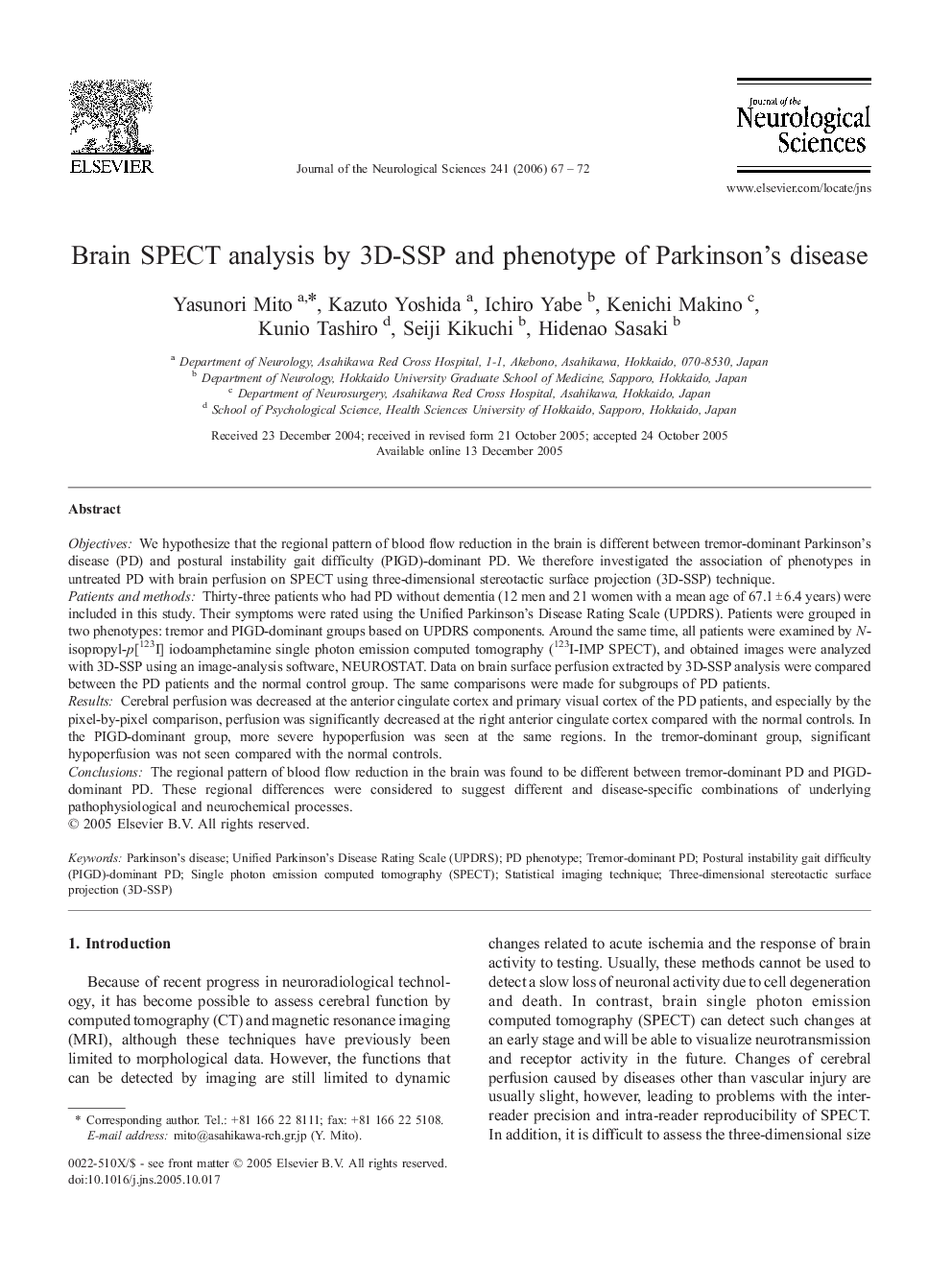| Article ID | Journal | Published Year | Pages | File Type |
|---|---|---|---|---|
| 1916659 | Journal of the Neurological Sciences | 2006 | 6 Pages |
ObjectivesWe hypothesize that the regional pattern of blood flow reduction in the brain is different between tremor-dominant Parkinson's disease (PD) and postural instability gait difficulty (PIGD)-dominant PD. We therefore investigated the association of phenotypes in untreated PD with brain perfusion on SPECT using three-dimensional stereotactic surface projection (3D-SSP) technique.Patients and methodsThirty-three patients who had PD without dementia (12 men and 21 women with a mean age of 67.1 ± 6.4 years) were included in this study. Their symptoms were rated using the Unified Parkinson's Disease Rating Scale (UPDRS). Patients were grouped in two phenotypes: tremor and PIGD-dominant groups based on UPDRS components. Around the same time, all patients were examined by N-isopropyl-p[123I] iodoamphetamine single photon emission computed tomography (123I-IMP SPECT), and obtained images were analyzed with 3D-SSP using an image-analysis software, NEUROSTAT. Data on brain surface perfusion extracted by 3D-SSP analysis were compared between the PD patients and the normal control group. The same comparisons were made for subgroups of PD patients.ResultsCerebral perfusion was decreased at the anterior cingulate cortex and primary visual cortex of the PD patients, and especially by the pixel-by-pixel comparison, perfusion was significantly decreased at the right anterior cingulate cortex compared with the normal controls. In the PIGD-dominant group, more severe hypoperfusion was seen at the same regions. In the tremor-dominant group, significant hypoperfusion was not seen compared with the normal controls.ConclusionsThe regional pattern of blood flow reduction in the brain was found to be different between tremor-dominant PD and PIGD-dominant PD. These regional differences were considered to suggest different and disease-specific combinations of underlying pathophysiological and neurochemical processes.
